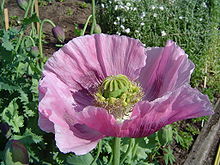

Ethnomedicine is a study or comparison of the traditional medicine based on bioactive compounds in plants and animals and practiced by various ethnic groups, especially those with little access to western medicines, e.g., indigenous peoples. The word ethnomedicine is sometimes used as a synonym for traditional medicine.[1]
Ethnomedical research is interdisciplinary; in its study of traditional medicines, it applies the methods of ethnobotany and medical anthropology. Often, the medicine traditions it studies are preserved only by oral tradition.[1] In addition to plants, some of these traditions constitute significant interactions with insects on the Indian Subcontinent,[2][3]inAfrica, or elsewhere around the globe.[citation needed]
Scientific ethnomedical studies constitute either anthropological researchordrug discovery research. Anthropological studies examine the cultural perception and context of a traditional medicine. Ethnomedicine has been used as a starting point in drug discovery, specifically those using reverse pharmacological techniques.
This section needs more reliable medical references for verification or relies too heavily on primary sources. Please review the contents of the section and add the appropriate references if you can. Unsourced or poorly sourced material may be challenged and removed. Find sources: "Ethnomedicine" – news · newspapers · books · scholar · JSTOR (July 2019)
|  |

Ethnopharmacology is a related field which studies ethnic groups and their use of plant compounds. It is linked to pharmacognosy, phytotherapy (study of medicinal plants) use and ethnobotany, as this is a source of lead compounds for drug discovery.[4] Emphasis has long been on traditional medicines, although the approach also has proven useful to the study of modern pharmaceuticals.[5][6]
It involves studies of the:
| Authority control databases: National |
|
|---|